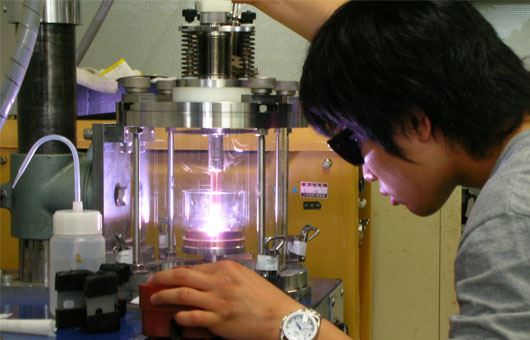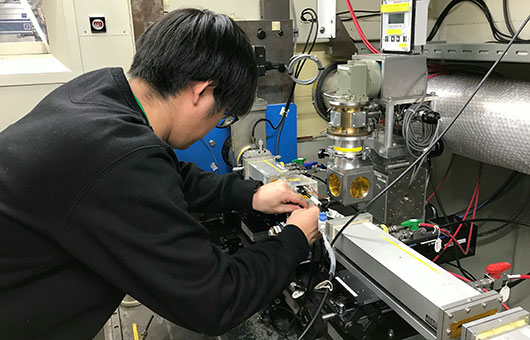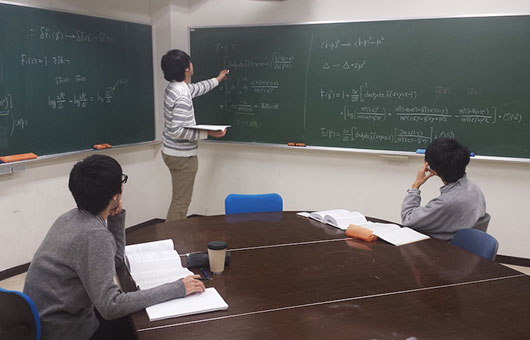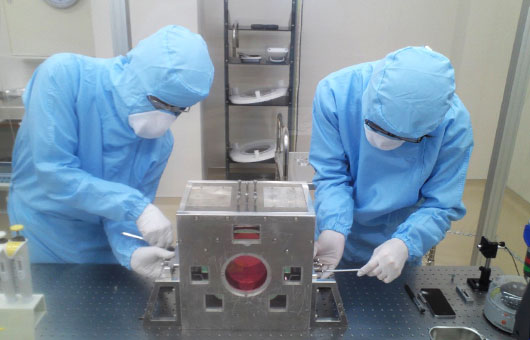Program of Physics 物理学プログラム

- Home
- Program of Physics
“What is matter made of?” “What is light?” “What are the laws that govern the universe?”
Physics began with such simple yet profound questions about nature—questions anyone might ask.
Through rigorous theoretical reasoning and sophisticated experiments, we continue to seek their answers.
Join us in exploring the mysteries of nature—perhaps you will be the one to open the next door to physics in the 21st century.
Curriculum
At university, students first learn the fundamentals of physics through core subjects such as mechanics, electromagnetism, quantum mechanics, and thermodynamics and statistical mechanics.
While mechanics and electromagnetism are also taught in high school, at the university level they are studied more systematically and rigorously using mathematical tools such as calculus.
Quantum mechanics, studied for the first time at university, deals with the physics of the microscopic world—atoms, molecules, and elementary particles.
In thermodynamics and statistical mechanics, students learn how the microscopic behavior of atoms and molecules determines the properties of materials in the macroscopic world we live in.
After building these foundations, students go on to more advanced and specialized subjects, enabling them to understand areas such as particle, atomic, molecular, and nanoscale physics, solid-state physics, electromagnetic and optical physics, and cosmology.
In the first year, students study a broad range of basic subjects in science.
In the second and third years, emphasis is placed on experimental education, with laboratory courses arranged according to each student’s progress.
In the fourth year, all students join a research laboratory to conduct a graduation research project, acquiring the ability to identify and solve problems independently.
Alongside physics education, the university also provides liberal arts courses, ensuring that students develop broad cultural knowledge and a well-rounded education.
Research Fields
Magnetism and Low-Temperature Physics Group
Our group creates new materials by combining the 92 naturally occurring elements and melting them at temperatures exceeding 1000°C.
These materials are then cooled to ultra-low temperatures near absolute zero (−273.15 °C) to observe their responses to magnetic fields, electric fields, pressure, and heat.
We interpret the results in terms of the quantum behavior of the vast number of electrons inside the material to study what is happening within.
Our goal is to discover new materials with novel physical properties—beyond strong magnetism and superconductivity—that can benefit humanity in the future.
Nanophysics Group
All matter around us is composed of atoms, and differences in atomic arrangement or bonding lead to a wide range of fascinating properties.
Our group analyzes atomic-level structures and measures various material properties to explore the relationship between microscopic structure and macroscopic behavior.
To achieve this, we conduct structural analyses using synchrotron radiation and measure electrical and optical properties under various conditions.
Join us in exploring the exciting world of nanospace.


Particle and Astrophysics Group
We conduct theoretical and experimental research to unravel the mysteries of the origin of the universe and the mechanisms behind astrophysical phenomena observed today.
Our main research topics include:
– the mystery of antimatter that disappeared from the universe,
– the existence and nature of dark matter,
– inflation, the exponential expansion of the early universe,
– the origin of neutrino mass, and
– the properties of the Higgs boson.
By comparing results from high-energy physics experiments (such as those using large accelerators) and astrophysical observations of gamma rays, neutrinos, and gravitational waves, we aim to construct and test new physical laws that go beyond the Standard Model of physics.
Radio Wave and Laser Physics Group
Our group studies physical phenomena involving atoms, molecules, and ions under various conditions, using electromagnetic waves ranging from microwaves to ultraviolet light.
We investigate gases, atoms confined in narrow spaces, and molecules cooled to extremely low temperatures.
Through these studies, we test fundamental physical laws and obtain essential data for radio astronomy, which explores molecules located tens of thousands of light-years away in the universe.
We also develop optical instruments for the KAGRA gravitational-wave telescope (at Kamioka Observatory, Gifu Prefecture, operated by the University of Tokyo’s Institute for Cosmic Ray Research), contributing to the advancement of gravitational-wave astronomy.

